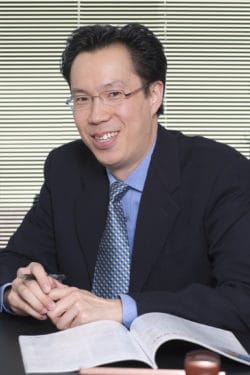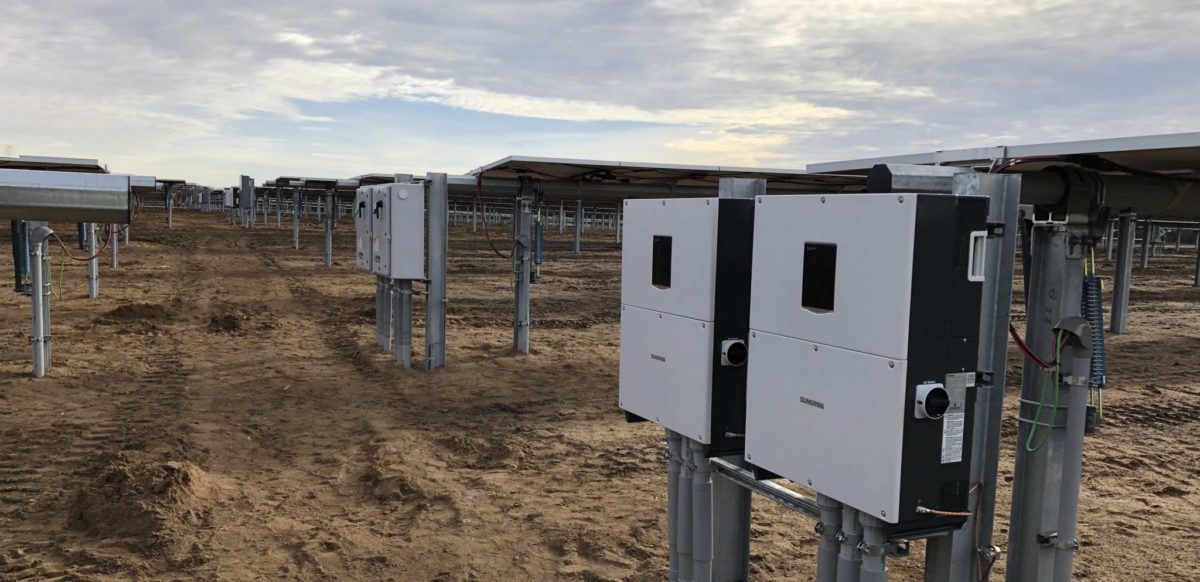As one of the largest inverter makers supplying utility-scale projects in the United States, Sungrow is in a unique position to comment on current market dynamics. This week we talked with Steven Chan, the CEO of Sungrow USA about what the latest moves by the Chinese government mean for this market, as well as the ongoing competition between central and string inverters in this market segment.
 pv magazine: What is your perspective as an inverter maker on how the changes to Chinese subsidies are likely to affect the U.S. and global markets?
pv magazine: What is your perspective as an inverter maker on how the changes to Chinese subsidies are likely to affect the U.S. and global markets?
Steven Chan: We’ve faced similar situations before in the solar industry and it is a dynamic where companies that are financial strong, fiscally strong and have a low-cost long-term roadmap, are the ones that get competitively stronger relative to their peers who don’t have those characteristics. Sungrow is an example of a company in a strong position.
Of course, this news is negative for the entire industry in general, but Sungrow is positioned to get stronger compared to our competitors, especially in Western markets.
I strongly believe Sungrow has the competitive advantage of having a very mature supply chain, and we have a large volume of installed capacity and installed sales. We have a diversified business model in China, and outside of China we are on the cusp of a breakout. This sort of situation helps us, because it is going to reduce the cost of the total system to be installed, and people are looking for a strong inverter supplier. Over the long term, we feel like we are that company partners developers and EPCs are looking for.
pv magazine: Do you expect pressure on prices to be translated to the United States?
Chan: I was on a call with a customer today. He said that the module prices, which late last week were pretty significant quotes of 45 cents per watt, had broken under 40 per watt. With that kind of dynamic, we felt like the pressure (to drop prices) on the inverter companies is less in comparison.
pv magazine: As you mentioned earlier, you expect a global fall in system prices. Do you think that will spur activity in the U.S. market?
Chan: Absolutely. For example, we have utility-scale customers who said that they have negotiated in their contracts an ability to have a notice to proceed that could vary by a year or more, based on things like module price fluctuations because there is so much uncertainty.
I think they weren’t thinking so much the China market uncertainty but tariff uncertainty. Now that something that has caused the module prices to fall more quickly than they expected, they can pull in those projects – they can do them faster than they thought they were going to. And so I feel like it could be an interesting catalyst to make the U.S. market bigger.
You might not see that impact tomorrow, but certainly over the next three, six, nine months.
pv magazine: You mentioned that don’t see as great of price pressure on inverters. Do you expect inverters to also be in a global oversupply situation?
Chan: Sure. There will definitely be over-capacity, but I do feel like people are becoming more discerning as to who they purchase from. Every time these sorts of things happen, people look to see who is Tier 1 and bankable with good technology with a low cost roadmap and good service, and who is maybe Tier 1, or Tier 2, or Tier 1 1/2 that may lack some of those characteristics.
You could always include these characteristics. We are bankable, we do have good technology, we do have a low-cost roadmap, and we are building up our service function. It’s much better than it has ever been. So even if there is that pressure, we will have more volume relative to peer companies.
pv magazine: In terms of the effect on the U.S. market, do you expect to see more action in states with previously underdeveloped markets, or do you expect mostly expansion in the established markets?
Chan: It is hard for me to predict down to the state level. But I would say that we are seeing interesting projects pop up in states that we were either dormant in, or where there is not a lot of activity.
For example, we won the largest project in Washington State. We won the largest project in Rhode Island. We are about to supply the largest project in Wyoming. We are energized by the fact that new states are embracing solar, and that we are on the leading edge of that.
pv magazine: My understanding is that Sungrow has recently supplied a large volume of 1500v string inverters to utility-scale projects. Can you comment on the market dynamics you are seeing around string versus central inverters in this segment?
Chan: I think that we are uniquely positioned to basically be at a good vantage point for this opportunity considering we offer both central and string utility-scale solutions. Where we go head to head against a central inverter competitor, it’s not the same company that we go head-to-head against for a utility string inverter opportunity.
A lot of people come to us, and they ask what do you think about these projects, whether they should use central or string, and why. We go through that analysis and people appreciate that.
From a high level, most people generally for big projects over 20 MW still like central. For the utility-scale projects that we are supplying with string inverters, they are 10 MW and creeping up, to 20 MW opportunities.
What has made that decision easier for people is that we’ve gotten string inverter pricing somewhat comparable to central inverter pricing. That has been a huge change in the market place. Previously string inverters were always much more expensive.
pv magazine: What are the specific technical advantages that string inverters bring to these projects?
Chan: With a central inverter, you want to have a uniform block. So these big project locations usually have that: flat land that is pretty uniform. They can run a bunch of rectangle-shaped blocks.
One of the reasons that we developed the string inverter is that the U.S. is running out of those optimal giant project locations. So the developers were having to look at sites that have conditions with rolling hills, or unevenly shaped sites. What we did is trying to design a string inverter that captures the best of both worlds. String inverter flexibility for site conditions, but also central inverter efficiency of design.
We designed a string inverter with a single MPPT, so a solar designer could customize the block size. I think we could go from 125 kW to 5 MW block. So with a wedge-shaped piece of land up on a hill, you might have a 1.25 MW block. In another site that is pretty wide open you might be able to do a 2.5 MW block. The idea is to optimally utilize project sites that are more challenging than typical wide-open, flat project sizes.
The other thing is that people talk about is central inverter downtime if there is a service disruption. If there is a string inverter that went down, a lot less of the site is negatively impacted, and also it could be easily replaced by a lower-level condition. We would offer on-site replacement, so people can just swap them out when they go down. When they are down, it is a lot less of the site that is negatively impacted.
So From an O&M point of view, people realize that string inverters enable them to run an O&M model that less factors in downtime associated with service and repair, because of string inverters.
pv magazine: Anything we haven’t talked about that you think is important for our readers to know about Sungrow and the U.S. market?
Chan: I would say that we are trying to offer the right solution for people in the distributed generation and utility space, whether it is a string inverter, or a utility application, or a string inverter for distributed generation projects, or a central inverter for utility-scale, or even an energy storage inverter, whether a string or central inverter.
Currently there are few to no companies that can offer that suite of options. It is important to note that we have established a service center in Phoenix, that can support our activities on the ground. So that service center offers training, and we’ve staffed it with service engineers.
We have a repair center, and that is combining the core competencies of the team in our headquarters with the manufacturing of product, and the on-the-ground service center.
This content is protected by copyright and may not be reused. If you want to cooperate with us and would like to reuse some of our content, please contact: editors@pv-magazine.com.









By submitting this form you agree to pv magazine using your data for the purposes of publishing your comment.
Your personal data will only be disclosed or otherwise transmitted to third parties for the purposes of spam filtering or if this is necessary for technical maintenance of the website. Any other transfer to third parties will not take place unless this is justified on the basis of applicable data protection regulations or if pv magazine is legally obliged to do so.
You may revoke this consent at any time with effect for the future, in which case your personal data will be deleted immediately. Otherwise, your data will be deleted if pv magazine has processed your request or the purpose of data storage is fulfilled.
Further information on data privacy can be found in our Data Protection Policy.